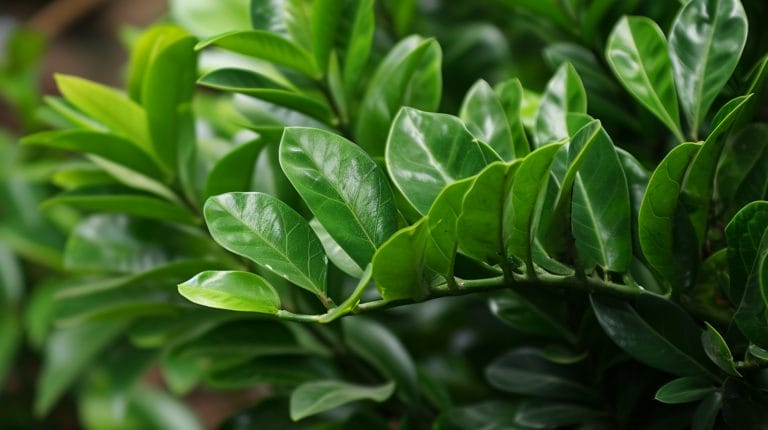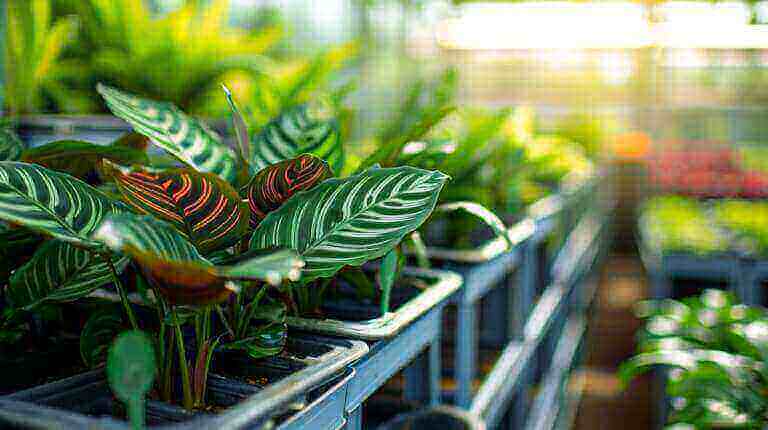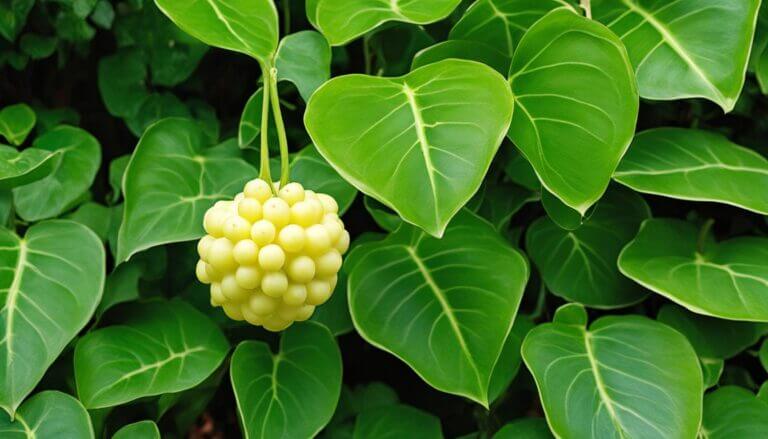How Fast Do Fiddle Leaf Fig Grow: Growth Rate and Tips
Fiddle leaf figs have become incredibly popular indoor plants, prized for their large, glossy leaves and statement-making presence. But if you’re considering bringing one into your home, you may be wondering just how fast these plants can grow.
Key Takeaways:
- Fiddle leaf figs can grow up to a foot or two each year, reaching heights of around 10 feet.
- In optimal conditions, fiddle leaf figs can exceed 10 feet in height.
- Dwarf varieties of fiddle leaf figs stay compact and reach heights of only 3 or 4 feet.
- Proper nutrition, lighting, watering, humidity, and soil conditions are essential for healthy growth.
- Optimizing care routines based on the specific needs of your fiddle leaf fig can promote desired growth.
Factors Affecting Fiddle Leaf Fig Growth
Several factors can significantly impact the growth of your fiddle leaf fig plant. By understanding and addressing these factors, you can promote healthy and thriving growth. Here are some key considerations to keep in mind:
- Lighting: Adequate light is crucial for your fiddle leaf fig’s photosynthesis and energy production. Ensure that your plant receives bright, indirect sunlight for at least 8 hours a day. Place it near east-facing windows for optimal natural light exposure. If natural light is insufficient, consider using grow lights as a supplement. Creating the right lighting conditions will help your plant thrive and grow.
- Watering: Proper watering is essential for the growth of your fiddle leaf fig. Wait for the top inch of soil to dry out before watering thoroughly. Overwatering can lead to root rot, while underwatering can cause stress and hinder growth. Finding the right balance is key to keeping your plant healthy.
- Humidity: Fiddle leaf figs thrive in humid environments. Low humidity can lead to dry conditions, causing new leaves to shrivel and fall off. Consider using a humidifier or placing your plant near a tray filled with water to increase humidity levels. This will help prevent leaf damage and promote healthy growth.
- Soil: Your fiddle leaf fig should be planted in well-draining soil that retains enough moisture. A mix of peat moss, perlite, and regular potting soil is ideal. Avoid overcompacting the soil, as it can negatively impact the plant’s growth. Regularly check the moisture levels to ensure proper drainage and moisture retention.
- Fertilizing: To replenish essential nutrients, fertilize your fiddle leaf fig every few months with a balanced plant food specifically formulated for these plants. This will help support healthy growth and ensure your plant receives the necessary nutrients for optimal development.
- Pruning: Pruning and shaping techniques play a vital role in promoting growth and maintaining a desirable shape for your fiddle leaf fig. Regular pruning, such as pinching and notching, can stimulate new growth and encourage branching. Be cautious not to over-prune, as this can stress the plant and hinder its development.
By taking into account these factors and providing the necessary care, you can create the ideal conditions for your fiddle leaf fig’s growth. Remember to monitor your plant regularly, adjust care routines accordingly, and enjoy watching your fiddle leaf fig thrive and flourish.
Optimal Care for Fiddle Leaf Fig Growth
Providing optimal care is essential for promoting healthy growth in fiddle leaf figs. By following these key care tips, you can ensure that your fiddle leaf fig thrives and continues to grow beautifully.
Watering:
Proper watering is crucial for fiddle leaf fig growth. It’s important to wait until the top inch of soil is dry before watering thoroughly. This helps prevent overwatering and root rot. Remember to allow excess water to drain out of the pot to maintain the right moisture balance.
Lighting:
Fiddle leaf figs require bright, filtered light for at least 8 hours a day to support photosynthesis and energy production. Place your fiddle leaf fig near an east-facing window, where it can receive ample indirect sunlight. If natural light is insufficient, you can supplement it with grow lights.
Soil and Fertilizing:
The soil should be well-draining and nutrient-rich to provide the proper environment for fiddle leaf fig growth. Consider using cactus soil or a premium fiddle leaf fig potting mix. Fertilize your plant every few months with a plant food specifically formulated for fiddle leaf figs to replenish essential nutrients.
Pruning:
Regular pruning helps stimulate new growth and maintains a healthy shape for your fiddle leaf fig. Remove any damaged or yellowing leaves to promote overall plant health. You can also shape your fiddle leaf fig by pinching and notching, encouraging branching and a desired form.
Following these guidelines for optimal care will help your fiddle leaf fig reach its full growth potential. With the right watering routine, proper lighting, nutrient-rich soil, and regular pruning, your fiddle leaf fig will thrive and bring beauty to your space.
Overcoming Common Challenges in Fiddle Leaf Fig Growth
While fiddle leaf figs can be a stunning addition to any space, they are not without their challenges. Understanding and addressing these common issues can help ensure the healthy growth of your fiddle leaf fig. Here are some common challenges and how to overcome them:
Brown Spots on Leaves
Brown spots on fiddle leaf fig leaves can indicate various issues. One common cause is overwatering, which can lead to root rot and damage the leaves. To prevent this, ensure that the top inch of soil is dry before watering and allow excess water to drain out. Alternatively, underwatering can also cause brown spots. Make sure to water your fiddle leaf fig consistently when the top inch of soil is dry.
Another potential cause of brown spots is insufficient light. Fiddle leaf figs thrive in bright, indirect sunlight. If your plant is not receiving enough light, consider moving it to a spot with better lighting or supplementing with grow lights.
Dropping Leaves
If your fiddle leaf fig is dropping leaves, it could be a sign of stress or improper care. One common cause is overwatering, which can lead to root rot and cause the leaves to drop. Ensure that you are allowing the top inch of soil to dry out before watering and that excess water is draining properly.
Low humidity can also cause leaves to drop. Fiddle leaf figs prefer moderately humid conditions, so consider using a humidifier or placing a tray of water near the plant to increase humidity.
Pests
Fiddle leaf figs can be susceptible to pests such as mealybugs, aphids, mites, and scales. These pests can damage the leaves and stunt the growth of your plant. Regularly inspect your fiddle leaf fig for any signs of pests, such as small insects, sticky residue, or curled and distorted leaves.
If you spot any pests, promptly treat your plant with appropriate methods. This may include using insecticidal soap, neem oil, or wiping the leaves with a mild soap and water solution. Ensure that you treat both the top and bottom surfaces of the leaves, as pests can hide in the crevices.
| Common Challenges | Possible Causes | Solutions |
|---|---|---|
| Brown Spots on Leaves | – Overwatering | – Allow top inch of soil to dry before watering – Ensure proper drainage – Adjust watering frequency |
| – Underwatering | – Consistently water when top inch of soil is dry – Check moisture level regularly | |
| – Insufficient light | – Provide bright, indirect sunlight – Consider supplemental lighting | |
| Dropping Leaves | – Overwatering | – Allow top inch of soil to dry before watering – Ensure proper drainage |
| – Low humidity | – Increase humidity with a humidifier or tray of water – Mist the leaves regularly | |
| Pests | – Mealybugs, aphids, mites, scales | – Inspect the plant regularly for pests – Treat with appropriate methods such as insecticidal soap or neem oil |
FAQ
How fast do fiddle leaf figs grow?
Fiddle leaf figs are known for their relatively slow growth rate. Typically, they can grow up to two feet per year when provided with optimal growing conditions.
What are some tips to encourage fiddle leaf fig growth?
To encourage the growth of your fiddle leaf fig, ensure it’s placed in a well-lit area, water it consistently but not excessively, and provide it with a balanced fertilizer during the growing season.
Do fiddle leaf figs grow faster indoors or outdoors?
Fiddle leaf figs can grow well both indoors and outdoors, but they tend to grow faster indoors due to the controlled environment and consistent care.
Will pruning my fiddle leaf fig affect its growth?
Pruning your fiddle leaf fig can actually encourage growth by redirecting energy to new areas of the plant. However, it’s important to prune selectively and not excessively to avoid stunting growth.
What factors can contribute to the growth of a fiddle leaf fig tree?
Factors such as proper watering, adequate sunlight, use of plant food, and a suitable environment can all contribute to the healthy and substantial growth of a fiddle leaf fig tree.
What can I do to encourage my fiddle leaf fig to grow taller?
To encourage your fiddle leaf fig to grow taller, ensure it receives abundant natural light, occasional pruning to shape the plant, and consistent care throughout the year.







